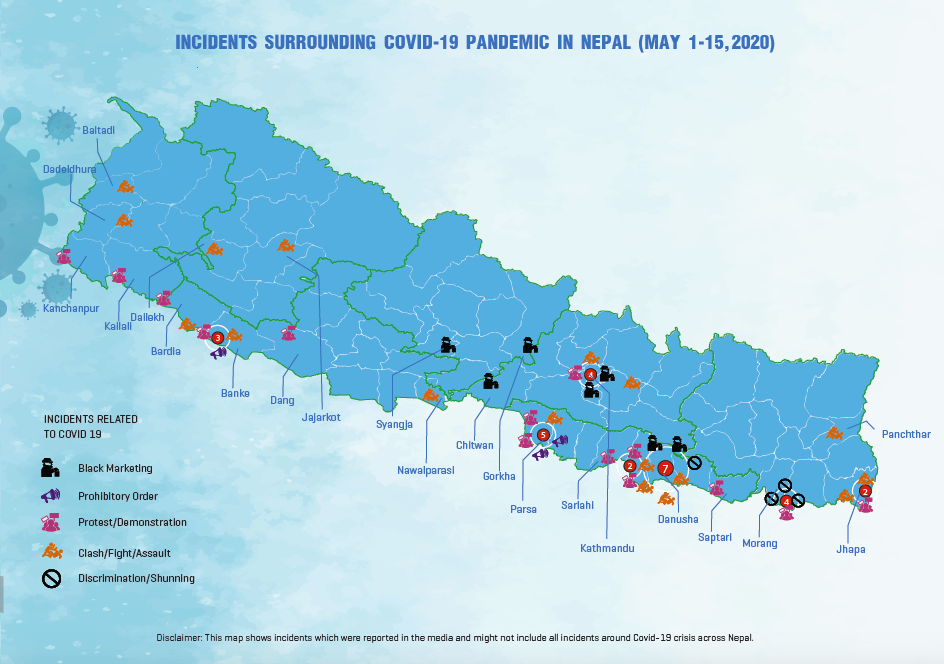Incident Reports
Minors at work (Op-ed)
2015-04-01
On Sunday, the police rescued 16 children from Nagdhunga, the entry point to Kathmandu along the Tribhuvan Highway, while being taken to Chitwan by a trafficking ring. All the children were below 13 years of age and had been employed as labourers at the Kapan Carpet Factory in Kathmandu. According to one of the boys who was rescued, he was made to work for 16 gruelling hours with only one break for lunch in between. Even on Saturday, supposedly a holiday, the children had to work from four in the morning until 10 am. And this is 25 years after Nepal ratified the Convention on Child Rights, which categorically states in Article 32 the signatory states “recognise the right of the child to be protected from economic exploitation and from performing any work that is likely to be hazardous or to interfere with the child’s education”.
According to the Nepal Labour Force Survey 2008, 3.14 million children—0.91 million girls and 0.69 million boys—between 5 to 17 years of age are currently working. An overwhelming 51 per cent of these children are between 10-13 years while 25 per cent are aged between five to nine. Among them, 1.60 million are engaged in tasks that are prohibited by law. About 0.12 million are engaged in hazardous work, which includes jobs in agriculture and fisheries, manufacturing, mining and construction, transport and freight handling, and domestic work. A 2012 report by World Education Nepal and Plan International further showed that there are 13,715 child labourers working in brick factories in the Kathmandu Valley alone.
Clearly, existing laws to curb child labour have not been effective. This can be attributed to multiple factors, one of which is the social acceptability of child workers. Young boys and girls working as waiters, cleaners, and cooks in small eateries, as domestic workers in homes, and as bus conductors are all too common in the Capital.
However, focusing only on banning child labour without taking the livelihood options of poor families into account will not suffice. The participation of children in the labour market is, more often than not, directly linked to the economic status of the family. Most of these child workers come from an extremely poor family, which forces them to look for work even before their teens.
Eradicating child labour, in addition to the stringent implementation of laws, demands sincere efforts at reducing poverty and ensuring dependable livelihood options for the poor. Employment generation schemes—like the National Rural Employment Guarantee Act in India, which provides 100 days of paid work each fiscal year to rural households whose adult members are engaged in unskilled labour—could be one way. Likewise, making schooling compulsory for children and conducting literacy programmes for adult women could also help families be more aware of the consequences of child labour. Formal education should also focus more on the practical application of courses so that families can see its value.
National/Online Media
Related Reports
GBV / Siraha
Complaint lodged against a 30-year-old man on the charge of raping a 13-year-old teenage girl in Siraha
December 26, 2023
GBV / Okhaldhunga
52-year-old man arrested on the charge of sexually assaulting a 16-year-old teen girl in Okhaldhunga
Province 1, Okhaldhunga, Sunkoshi, Ward 8
December 03, 2023
GBV / Rupandehi
Complaint lodged against a 22-year-old youth on the charge of raping a minor girl in Rupandehi
August 29, 2023
GBV / Sudurpashchim
School teacher accused of sexually abusing students accused in Kanchanpur
August 20, 2023
Related Trend Analysis
Analysis

THE NEPAL PEACE MONITOR ANNUAL REVIEW: 2020
October 25, 2021
Human Trafficking / LGBT+ Rights / GBV / Political / Children’s Rights / Senior Citizens’ Rights / HRD Issues / Human Rights / Interpersonal Violence / Governance / Covid-19 / Civic-Space / PwD



